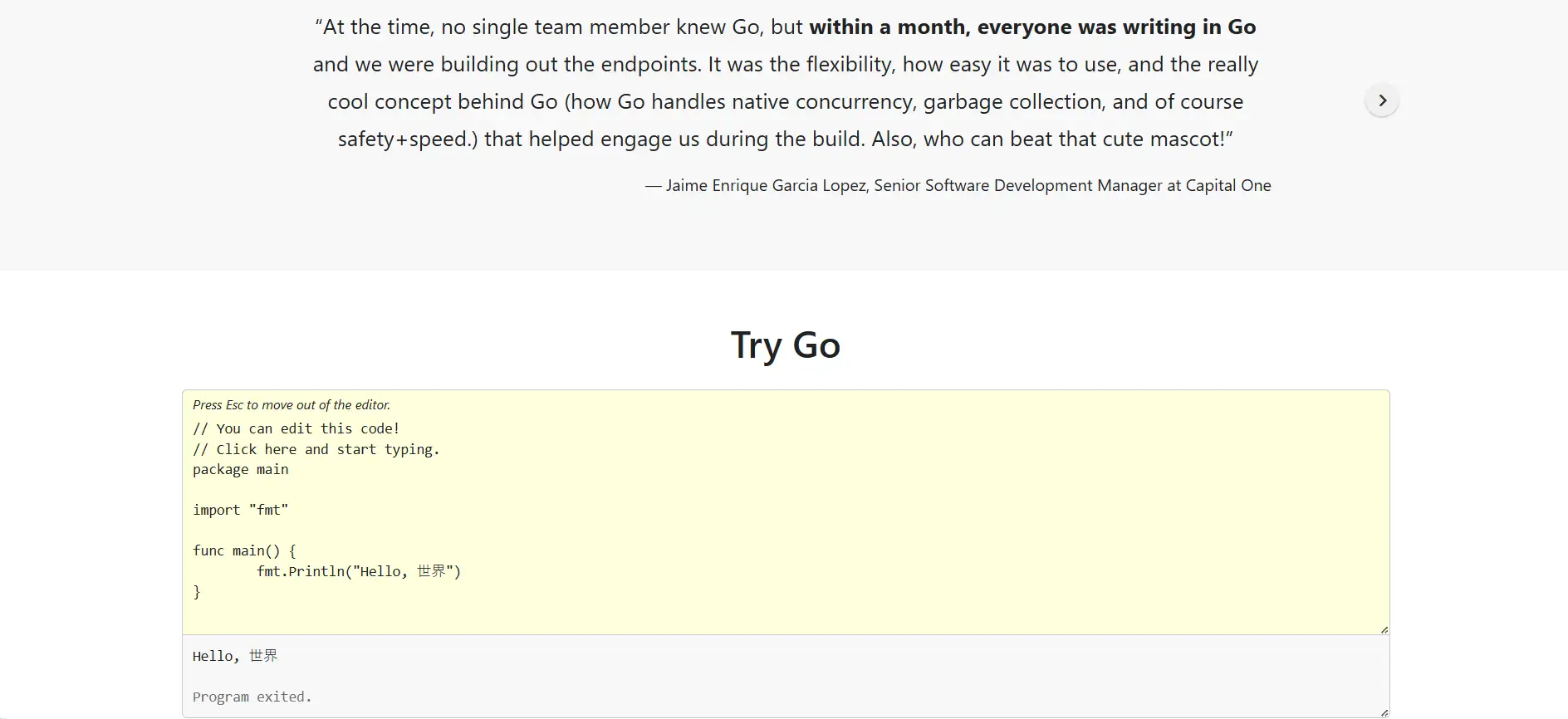About Go
Go is an open-source programming language designed by Google to empower developers to build simple, secure, and scalable software systems. Since its inception in 2007 and public launch in 2009, Go has become widely known for its concise syntax, fast compilation, and powerful concurrency features. It supports a strong community, excellent tooling, and seamless integration with modern infrastructure platforms, making it a top choice for building efficient backend services, distributed systems, and cloud-native applications.
One of the language’s defining characteristics is its minimalism—keeping the feature set small but powerful. With its garbage collection, strict typing, and built-in support for concurrency through goroutines and channels, Go enables developers to write reliable and maintainable code with fewer lines and better performance. Its growing ecosystem includes thousands of packages, real-world case studies from top enterprises, and vibrant educational resources to support developers at every stage.
Originally created at Google to address the company’s own challenges with software scalability and developer productivity, Go has grown into a leading language for building production-grade systems. Since its open-source release in 2009, Go has found widespread adoption in both startups and enterprises. Companies like PayPal, American Express, Netflix, Capital One, and ByteDance use Go to deliver scalable infrastructure, microservices, and low-latency APIs.
The language’s design reflects the realities of today’s development needs. It supports fast build times, has a built-in formatter and testing tools, and produces statically compiled binaries, making deployment across different platforms seamless. Go’s standard library includes powerful packages for networking, encryption, web servers, and more—enabling developers to build robust systems without relying on third-party libraries.
The rise of cloud-native architectures has played a pivotal role in Go’s popularity. The language is widely used for backend APIs, command-line tools, and network servers. At companies like Cloudflare, Go powers core network infrastructure. Dropbox replaced Python backends with Go to increase speed and performance. Uber relies on Go for real-time analytics engines like AresDB.
Beyond tooling and performance, Go also addresses a major pain point in development: onboarding and readability. The language is intentionally simple, reducing ramp-up time for new engineers. This simplicity contributes to team-wide consistency and reduced bugs, particularly valuable for companies with large codebases or distributed teams.
Competing languages include Rust (for systems-level safety and performance), Python (for scripting and machine learning), and Java (for enterprise and Android development), but Go sets itself apart with a unique blend of performance, simplicity, and robust concurrency support.
Go provides numerous benefits and features that make it a top choice for building scalable and maintainable systems:
- Built-in Concurrency: Go’s goroutines and channels make concurrent programming straightforward and efficient, ideal for multi-core processors and distributed applications.
- Fast Compilation: Go compiles code quickly into a single static binary, enabling seamless deployment and fast iteration cycles.
- Powerful Standard Library: Extensive built-in packages support HTTP servers, cryptography, database access, and more—reducing the need for external libraries.
- Strong Tooling: Comes with a full toolchain including formatters, profilers, linters, and testing frameworks—all integrated into the language itself.
- Cross-Platform Deployment: Go’s cross-compilation capabilities allow developers to build for Windows, macOS, Linux, and other systems from a single machine.
- Thriving Community: Backed by Google and a global community, Go has active meetups, conferences, and a steady stream of educational content.
Getting started with Go is straightforward and well-supported through official documentation and community resources:
- Download the Go SDK: Visit the official Go download page to install Go on Windows, macOS, or Linux.
- Take the Go Tour: Begin learning by walking through the interactive Go Tour that explains syntax and core concepts.
- Use the Playground: Experiment with code online at the Go Playground—a live editor and compiler.
- Read the Docs: Access comprehensive documentation including Effective Go, the Language Specification, and Package Index.
- Join the Community: Connect via Twitter, GitHub, and Golang Weekly.
- Start Building: Explore real-world examples and best practices by reading the Go Blog or checking out open-source projects written in Go.
Go FAQ
Go introduces a built-in concurrency model based on goroutines and channels, making it easier to manage parallel tasks without complex thread management. Goroutines are lightweight and managed by the Go runtime, enabling developers to spawn thousands of concurrent operations without degrading system performance. Channels allow for safe communication between goroutines, leading to code that is both efficient and easier to reason about. This concurrency model is a major reason why companies like Uber and Cloudflare rely on Go for performance-critical systems.
Go is frequently used for CLI tools and DevOps scripting due to its simple syntax, quick compilation, and strong standard library. Tools like Terraform, Docker, and Kubernetes are built in Go, proving its reliability in automation and operations contexts. Developers benefit from easy cross-compilation, static binaries, and native performance, allowing them to create portable tools with no external dependencies. The built-in flag, os, and filepath packages make command-line parsing and system interaction straightforward. Learn more at the official Go website.
Go is purpose-built for modern microservice architectures, offering low memory overhead, rapid startup times, and native concurrency. It produces static binaries that are perfect for containerization, a key requirement in Kubernetes environments. Companies like ByteDance and Netflix use Go to deploy thousands of microservices because it supports high throughput and resilient design patterns. With Go, engineers can easily break down monolithic applications into maintainable, scalable services across the cloud.
Go reduces complexity through its philosophy of doing more with less. The language avoids feature bloat, and instead promotes readable, maintainable, and consistent code. Developers no longer need to manage virtual machines or install runtime interpreters—Go compiles to a single binary. Its tooling supports formatting, testing, and profiling out of the box. Organizations like PayPal and American Express reported lower CPU usage and cleaner code after adopting Go, resulting in simplified infrastructure and easier maintenance workflows.
Go produces statically compiled binaries, which encapsulate all dependencies into a single executable. This eliminates the need for runtime environments and ensures predictable, reproducible deployments. Teams can ship Go applications confidently across different platforms—Linux, Windows, or macOS—without worrying about missing libraries or mismatched versions. This is particularly valuable in containerized environments like Docker, where clean and minimal images improve security and performance. For developers and ops teams alike, static compilation significantly improves the software delivery pipeline. Try compiling a binary at Go Playground.
You Might Also Like












